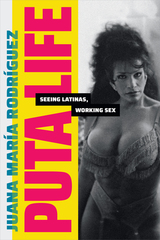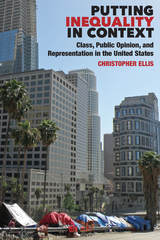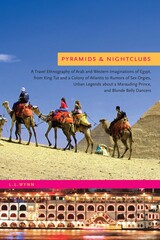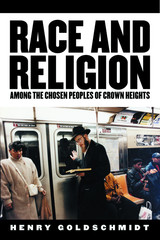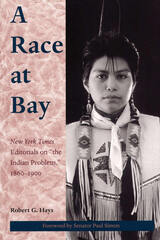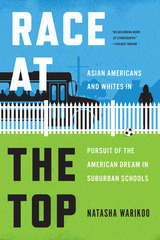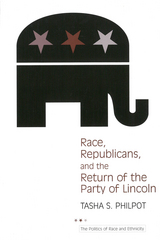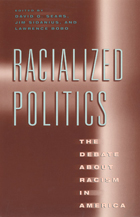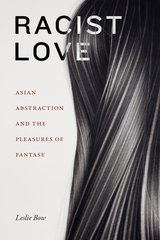Mixed Blood: Intermarriage & Ethnic: Intermarriage And Ethnic Identity In Twentieth Century America
by Paul R. Spickard
University of Wisconsin Press, 1991
Paper: 978-0-299-12114-3
See other books on: 20th Century | Ethnic | Identity | Intermarriage | Twentieth Century America
See other titles from University of Wisconsin Press
Paper: 978-0-299-12114-3
AUTHOR BIOGRAPHY | REVIEWS | TOC | REQUEST ACCESSIBLE FILE
AUTHOR BIOGRAPHY
Paul R. Spickard is professor of history at the University of California, Santa Barbara. He is the author of many books including Race and Nation: Ethnic Systems in the Modern World and Almost All Aliens: Immigration, Race, and Colonialism in American History and Identity.
REVIEWS
“Paul R. Spickard has performed a tremendous service to historians and other students of ethnicity in writing this study of the historic patterns and changing meanings of out-group marriage. In focusing on the experiences of those Japanese Americans, American Jews, and African Americans who chose to wed nongroup members, and conversely on the experiences of white, Christian Americans as they took spouses from these three minority groups, the author seeks to link social structure and cultural constructs as explanations for particular patterns. … Spickard in no place denigrates the passionate feelings of group members worried about intermarriage or its implications for ethnic cohesion; he offers instead an alternative, cooler way of looking at the issues.”—Hasia R. Diner, American Historical Review
"Mixed Blood serves an important function in drawing together a far-ranging set of experiences, all of which bear on the phenomenon of intermarriage. Spickard also broadens the reader's scope of reference in comprehending the forces driving intermarriage, through his introduction of cultural themes of acceptance."—Deanna Matsumoto, Amerasia Journal
"A sensitive and informative work on a topic of major importance."—Ronald C. Johnson, Journal of Marriage and the Family
TABLE OF CONTENTS
- Contents
- Acknowledgments
- 1.
- The Problem of Intermarriage
- Ideas about Intermarriage
- Ideas about Ethnicity
- The Scope of This Study
- Terms
- Part I.
- Japanese Americans
- 2.
- Background and Images: Fu Manchu and Charlie Chan
- Issei, Nisei, Sansei
- Changing Images of Japanese Americans
- Japanese Americans' Ideas about Non-Japanese and about Intermarriage
- 3.
- Dimensions of Intermarriage: Old Barriers Fall
- Generations and Intermarriage
- Japanese American Reactions to Intermarriage
- Other Americans' Reactions to Intermarriage with Japanese
- Regional Differences in Intermarriage
- Intermarriage and Social Class
- 4.
- Issues and Interpretations: Japanese, American, or Something in Between?
- Intermarriage within the Japanese Group
- A Hierarchy of Choice
- Outmarriage and Divorce
- Children of Japanese American Intermarriage
- Summary of Part I
- Part II.
- Madam Butterfly Revisited
- 5.
- American Men and Japanese Women after World War II
- GIs and Japanese Women
- Dating and Marrying
- Adjustment to America
- Children of War Brides in America
- Konketsuji: Mixed Children in Japan
- Summary of Part II
- Part III.
- Jewish Americans
- 6.
- Background and Images: Shikse and Jewish Mother
- Jewish Intermarriage in the Ancient World
- Intermarriage and Jewish-Gentile Relations in Europe
- American Jewish Intermarriage: Sephardim and German Jews
- The Orthodox Invasion
- Mutual Images
- 7.
- Dimensions of Intermarriage: Separate Identity amid Growing Acceptance
- The Generations and Intermarriage
- Jews Respond to Intermarriage
- Gentiles Respond to Intermarriage with Jews
- Regional Differences in Intermarriage
- Class Differences in Intermarriage
- Denominational Differences in Intermarriage
- 8.
- Issues and Interpretations: According to the Halakhah
- The Intermarried Personality
- Cleavages within the Group
- The Hierarchy
- Intermarriage and Conversion
- Intermarriage and Divorce
- What of the Children?
- Summary of Part III
- Part IV.
- Black Americans
- 9.
- Background and Images: The Core of the Heart
- Miscegenation before the Civil War
- Mutual Images
- 10.
- Dimensions of Intermarriage: The Wall Remains
- Black Intermarriage over Time and Generation
- White Reactions to Interracial Marriage
- Black Reactions to Interracial Marriage
- Regional Differences in Intermarriage
- Class Differences in Interracial Marriage
- 11.
- Issues and Interpretations: Passing Is Passé
- The Psychology of Interracial Mating
- Varieties of Black Americans
- Hierarchies of Choice
- Interracial Marriage and Divorce
- Mulattoes and Passing
- Summary of Part IV
- 12.
- Conclusion
- Some Comparisons
- Intermarriage Theories Reconsidered
- Intermarriage and Ethnic Identity
- Appendix A:
- Summary of States' Laws on Interracial Marriage
- Appendix B:
- Interracial Family Organizations
- Notes
- Bibliography
- Index
REQUEST ACCESSIBLE FILE
If you are a student who cannot use this book in printed form, BiblioVault may be able to supply you with an electronic file for alternative access.
Please have the accessibility coordinator at your school fill out this form.
It can take 2-3 weeks for requests to be filled.
See other books on: 20th Century | Ethnic | Identity | Intermarriage | Twentieth Century America
See other titles from University of Wisconsin Press
UChicago Accessibility Resources
home | accessibility | search | about | contact us
BiblioVault ® 2001 - 2024
The University of Chicago Press

